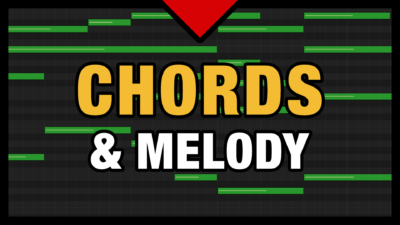 How to think of Chords vs Melody?
How to think of Chords vs Melody?
The most essential rule when it comes to Chords, Melody and Intervals is this: all melodic voices of all your instruments are what creates the current chord at any specific point of your music composition. This is automatic by the relationship of all intervals between the notes.
Now if you play a chord progression on for example piano, you usually change chord too slowly for the internal voices of the chords to be considered a melody. So basically the usual way to look at chords in music, is like a harmonic foundation, a framework for your story.
However, if you change chords very often, like almost every quarter note, your chord progression will feel more like counterpoint harmony. Meaning several individual melodic lines played together. But as already shown you, this is always the case. The difference is that you don’t notice that well when the chord notes are held longer.
Chords vs Melody Factor
I call this the Chords vs Melody Factor. And you can use this factor to your advantage to add more support to the melody. Because every time a note inside your chord changes, even one single voice, it is like a micro accent. And that micro accent will support your melody if your melody changes the note at that exact time as well.
If you change the entire chord, that is even more of an accent. Now, are you starting to see what you can do here. You can use your chord changes, and voice leading inside the chords, to accent and support your leading melody. Especially if you use voice leading that takes a voice in the chord to the same no te as the melody.
So, basically, by changing chord more often, you are getting more into the realm of counterpoint harmony in your chord progression. And this will add more support to your leading melody.
Now, try this out for yourself. Write a melody line of 4 bars. Then first add chords that change every bar. Next, try to add chord changes in between, start with the half bar marks. And if you can manage, do it on the quarter notes as well.
Here’s a tip: A chord change doesn’t have to be an entirely different chord. Altered chords, and extended chords, often work great. Like going from a triad to a add 6, or suspended chord. Perhaps a 7th. And so on.
In fact, you will find that these chord colorings are often more powerful as added support to your leading melody than completely new chords, because you often only need to change one single voice of the chord, and that voice can then go to the melody note.
